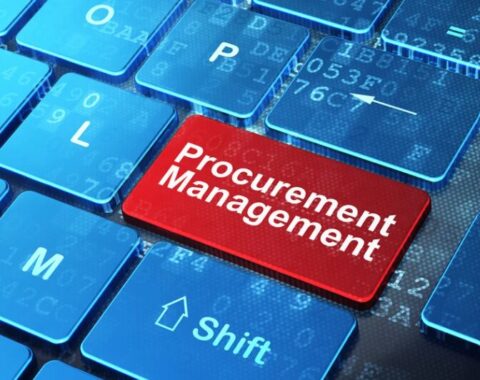Microsoft License Management is crucial because starting January 15, 2026, license validation for Dynamics 365 finance and operations applications will begin for customers with contract renewals or anniversaries occurring after that date.
To ensure continuous access and avoid future disruptions, organizations should proactively review and assign licenses early. Otherwise, users without assigned licenses will lose access after technical validation. Instead of entering the application, they will receive prompts to request the right license from their administrator.
What’s Changing
Microsoft is ending tiered discounts (Levels B–D) for Online Services under Enterprise Agreements. This means many organizations will now pay standard list pricing instead of discounted rates.
For Dynamics 365 users, Microsoft will begin blocking access for accounts without valid licenses. Initially, there will be soft warnings, but after January 15, 2026, unlicensed users will be fully restricted from accessing the application.
Smaller organizations with fewer than 2,400 licenses will also lose eligibility for Enterprise Agreements and must transition to another model, such as the Cloud Solution Provider (CSP) program.
Customers moving to CSP will need to purchase Microsoft Teams separately, potentially increasing costs.
Nonprofits may see fewer free grant licenses, but discounted pricing will remain available.
What You Should Do
Audit your licenses: Review your current usage and purchased licenses to find mismatches.
Assign correctly: Ensure every active user has a valid license.
Clean up accounts: Remove or reassign licenses from inactive users.
Check your renewal date: If your Enterprise Agreement ends soon, renew before October 31, 2025, to retain current pricing.
Plan your transition: If you’re a smaller organization, start preparing your move to CSP or another suitable licensing model now to avoid disruption.
Why Licensing Matters in Microsoft Dynamics 365 F&SCM
Your Dynamics 365 Finance & Supply Chain Management (F&SCM) deployment depends heavily on licensing. It directly impacts your compliance, scalability, and operational costs.
When managed well, licensing supports operations and helps you stay within budget. However, when handled poorly, it can lead to cost overruns and even compliance audits from Microsoft.
These audits may result in penalties for contract breaches. Moreover, employees could face feature limitations that lower productivity and force them into costly manual workarounds.
Even worse, poor license management can strain vendor relationships. Service levels may become rigid, leaving little room for flexibility or negotiation. As a result, organizations lose control, productivity, and contractual balance.
Therefore, ERP licensing for Microsoft Dynamics 365 requires careful attention. It governs not just user access, but also feature availability, integration capabilities, and data processing limits.
When businesses treat licensing as an afterthought, they often face unexpected restrictions—right when they need the system to be most flexible.
Overview of Microsoft Dynamics 365 Licensing for Supply Chain Management
Microsoft Dynamics 365 F&SCM integrates finance operations with supply chains in a single suite. Under the finance licensing package, you receive a general ledger, accounts payable, accounts receivable, budgeting, compliance, and advanced reporting capabilities. Under the supply chain licensing package, you receive purchasing, accounts payable, inventory management, warehousing, production scheduling, logistics, and real-time visibility. The finance modules assist organizations with complex reporting, multi-currency management, and compliance, while the supply chain modules help control operations, manufacturing, and inventory integration. Manufacturing companies prioritize visibility of their supply chains, production planning, and oversight of finances. To prevent over-licensing or overlooking essential elements, organizations should determine whether Finance, Supply Chain, or both together meet their functional needs.
Common Dynamics 365 F & O Licensing Models Explained
User-based licensing
It is a type of licensing where licenses are assigned to individual users. This works best when organizational user roles are well defined. Users classified as full users receive total access to all licensed modules, while limited users have restricted access to functions or modules relevant to their roles.
Role-based licensing
It provides even more detailed and specific access. This is particularly useful for large organizations, as users literally pay only for what they will use.
Module-based licensing
Organizations can license specific functional areas independently. This provides the most flexibility for organizations that want to implement D365 F&SCM in phases or those with specialized needs in particular areas.
Microsoft Dynamics 365 Finance Licensing Cost
There are multiple components in Microsoft Dynamics Finance and Supply Chain pricing beyond user licensing fees. Knowing these elements is vital for accurate budget planning and understanding potential future costs.
Base Licensing Structure
- Base user licensing fees are categorized and priced according to user role, and whether they require login access at any level.
- User volume is determined by demand and functionalities within specific modules; fees are adjusted accordingly.
- Organizations with more users and at least one seat will also qualify for volume discounts.
Hidden And Additional Costs
- Advanced functions within add-on modules, such as advanced warehouse management or regulatory compliance/ reporting, require extra fees for features.
- Licensing middleware or additional connectors can incur costs for integration with existing systems, as well as for crossing system developer environments and testing licenses.
- Training environment, user onboarding, and ongoing education access licenses can also contain additional costs.
Data and Storage Considerations
- Costs for licensing storage increase with the volume of transactions and storage within the system.
- Costs to retain and backup historical data also affect storage fees; compliance with business continuity licensing will add to the ongoing volume of transactions.
Risks of Getting Licensing Wrong
Inadequate Microsoft Dynamics 365 Finance and Supply Chain Management licensing planning is not only about the added costs; it leads to issues in compliance, productivity, and scaling.
A common pitfall is paying too much for modules that a company doesn’t even need. Because companies fail to do proper needs assessments, they buy complete licensing packages, incurring inflated costs and ongoing overhead to maintain what they bought but don’t need.
Compliance issues, especially with Microsoft audits, are another risk. Unlicensed feature usage or hitting limits triggers costly retroactive fees and penalties. Lost productivity is another byproduct of poor license planning. When employees don’t have the necessary resources, they are forced to create inefficient workarounds for tasks that take much longer and introduce costly errors.
Lost productivity erodes any possible savings from poor license planning. Lastly, poor license planning constrains an organization’s ability to be flexible. Mistakes with licensing limit an organization’s ability to respond to changes in the market or to pursue changes that require adjustments.
How to Ensure Compliance and Optimize Licensing
The compliance with the licenses would also need regular administration, as well as periodic assessments of the use of the available resources. Maintaining compliance operated as a business-as-usual practice with the use of audits, expert consultations, alignment of growth with license, optimization of license to business units based on the role, and enhancing the baseline of satisfaction.
Renewal of licenses on a yearly basis or according to the changes in the business will allow noting gaps and points where optimization is possible. Licenses would be integrated along with growth plans to prevent growth blocks. Role-based licenses provide targeted resources, resulting in reduced administrative overhead, long-term cost savings, and improved user satisfaction.
Conclusion
To sum up, Microsoft Dynamics 365 Finance and Supply Chain Management licensing is more than just a technicality; it forms a strategic groundwork for the continued success of the organization’s ERP. When effectively implemented, the companies incur less, adhere to it, and make optimal use of D365 F&SCM without hindering progress, and achieve higher productivity. This can only be achieved with regular tests, clever secondary fine-tunin,g and care given by a professional. Diversifying your licensing is another top priority that would protect your investment, decrease exposure, and allow the organization to reach long-term ESG and scale!




